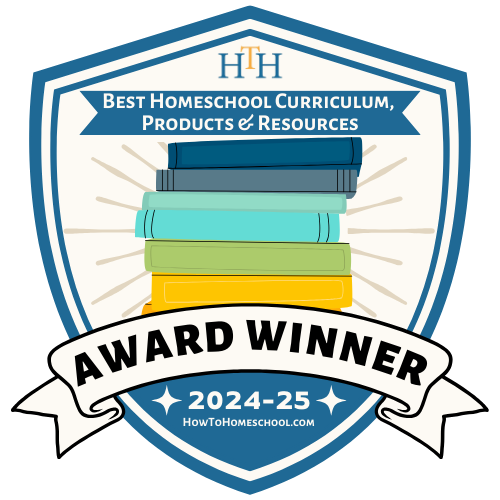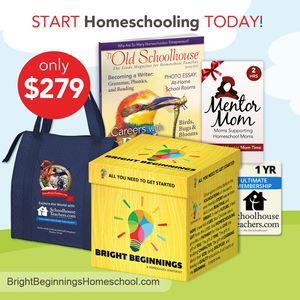Teaching Strategies to Help Struggling Learners
If you have a struggling learner, you know the challenges that come with every day. Whether the struggle comes from one individual subject or from across the academic board, you understand what it takes to get through the day, and I am here to support you with teaching strategies to help a struggling learner.
What is a struggling learner?
A struggling learner is a learner that has to work harder than others to learn the same information. Whether it's just the way they process information or whether there is a diagnosed disability, they process the information they take in slower.
As a homeschooler, you feel responsible for your child to learn well and to learn so that they might thrive as an adult. Having a struggling learner is even more scary because you often feel lost at how to help them. And, often you feel alone in where to turn to get help for them and support for yourself.
How to help a struggling learner.
Students have a wide range of abilities, even within a family. Helping learners, by figuring out what helps them learn best (learning styles), builds confidence and structure to their learning. You can learn more about learning styles in my article, How to Find Your Child's Learning Style.
Realizing that you are not responsible for how your child learns is the first step. You only need to know how to help them learn so their strengths can be accentuated. As parents, we put so much pressure on ourselves to do everything perfectly, that we often get paralyzed in finding ways to help our child. (The internet can be a wonderful thing - you have a world of experts at your fingertips! Use it to your advantage.) There are multiple resources to draw upon for help, in a myriad of different ways, some paid services and some free services.
My own kiddo struggled with getting his thoughts from his head to paper. He had great thoughts but I had to find a way to help him get those thoughts onto paper to make him feel good about his abilities and to help him learn how to use the resources I could give him to formulate his words and get them written. We used some of the following academic devices to help. In the beginning, when we realized there was a problem, we also allowed him to dictate to us. That worked initially, and was fine for Elementary school. But as we moved toward middle school and the push for more independence was imminent, we began to move to typing his thoughts instead of physically writing them. Eventually, he was able to move to a more successful writing experience, although even now he writes better when he types his thoughts versus physically writing them. In college now, he is a very good writer. I am convinced that understanding his learning style and using the resources I had learned on how to help struggling learners, my husband and I were able to help him learn to accommodate his struggles.
Teaching strategies to help struggling learners:
Scaffolding - a big word for breaking things into small chunks.
- Providing logical order while moving toward a goal.
- Bridge what they already know with what your goal for learning is. The bridges are the scaffolds.
- Sometimes using charts, pictures, tables can be a scaffold.
In some ways, the way we helped our kiddo move from not being able to get his thoughts from his brain to his paper was scaffolding. We started small, gave him confidence, and built on that confidence until he was strong enough to stand on his own. Another example might be where you model how to solve a problem, practice it with the student, help them figure it out with your help, and eventually moving to a support role only.
Graphic organization
- Charts, graphs, and images that help organize thoughts: flow chart, Venn Diagram, KWL chart, etc.
One very popular organizer when it comes to helping a child understand similarities and differences in all kinds of academics is the Venn Diagram. The Venn Diagram is three circles connected with a center where they all share similarities. This is a great resource for getting the most popular graphic organizers.
Multisensory Memorization
- These are good for helping all learners, especially struggling learners.
- Maybe your child only struggles in math - use base-ten blocks or fraction squares for the sense of touch or drawing pictures to remember vocabulary.
When my kids started middle school, I began to build vocabulary for them that they might find on the SAT. One of my favorite resources for doing that was this book, Vocabulary Cartoons: SAT Word Power. It was a book that provided a daily cartoon with a word to learn. The cartoon was something silly that tied the word to the cartoon. It was a great resource for helping my kids learn and remember loads of vocabulary. Math manipulatives are another great example of multisensory memorization, as well.
Mnemonics
- Great for all learners.
- Special phrases to remember information, ex: For the music scales Every Good Boy Does Fine EGBDF for the lines on the Treble Clef staff when learning music, like in the image below.
High school and college resources.
But, what about high school and college resources? Many of the resources above can be used from elementary through college. Once you learn the strategy, you have a way of assimilating information into what you already know.
Lee's article, College for Struggling Learners is a great resource for parents of older children thinking about college. It is stressful, as a parent, to know your child better than anyone, and think of them taking their struggles in learning to college with them. Lee's article gives you great advice on ways to help your child succeed in college.
Another great resource Lee has is an online resource called the College Launch Solution. This online resource is full of insightful articles, perceptive videos, and loads of helpful resources that not only get your struggling learner into college, but helps them succeed in college, as well. Lee acts as your personal guidance counselor to help you ease the stress of helping your student get into college, and just succeed at life!
Be sure to encourage your struggling learner through the hard times. A word of encouragement can go a long way and can be the best resource of all
Naturally, Anita
About the Author
Anita Walker is happily married to Andy, and mom to two adult children, and one son-in-law. She homeschooled her kids throughout late elementary, middle school, and high school and they are now thriving adults; one is married and working as a hair stylist and the other is a Junior in college majoring in Psychology. In her free time, she enjoys hanging out with her family, usually on the deck around the fire. Most recently, she has started blogging. You can find her at Naturally, Anita.
When you subscribe to the blog, we will send you an e-mail when there are new updates on the site so you wouldn't miss them.

 Login
Login









.jpg)

Comments